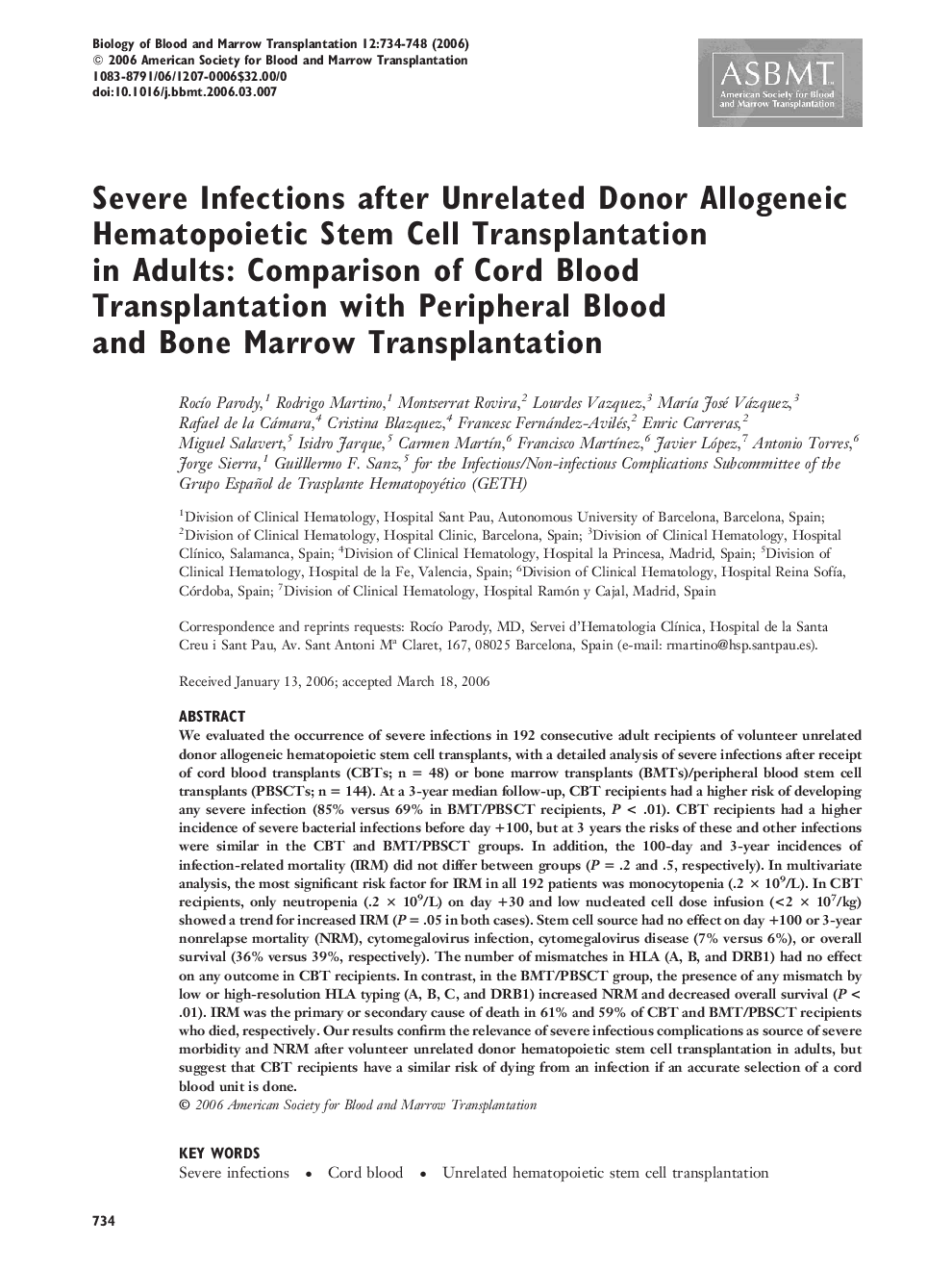| Article ID | Journal | Published Year | Pages | File Type |
|---|---|---|---|---|
| 2105173 | Biology of Blood and Marrow Transplantation | 2006 | 15 Pages |
We evaluated the occurrence of severe infections in 192 consecutive adult recipients of volunteer unrelated donor allogeneic hematopoietic stem cell transplants, with a detailed analysis of severe infections after receipt of cord blood transplants (CBTs; n = 48) or bone marrow transplants (BMTs)/peripheral blood stem cell transplants (PBSCTs; n = 144). At a 3-year median follow-up, CBT recipients had a higher risk of developing any severe infection (85% versus 69% in BMT/PBSCT recipients, P < .01). CBT recipients had a higher incidence of severe bacterial infections before day +100, but at 3 years the risks of these and other infections were similar in the CBT and BMT/PBSCT groups. In addition, the 100-day and 3-year incidences of infection-related mortality (IRM) did not differ between groups (P = .2 and .5, respectively). In multivariate analysis, the most significant risk factor for IRM in all 192 patients was monocytopenia (.2 × 109/L). In CBT recipients, only neutropenia (.2 × 109/L) on day +30 and low nucleated cell dose infusion (<2 × 107/kg) showed a trend for increased IRM (P = .05 in both cases). Stem cell source had no effect on day +100 or 3-year nonrelapse mortality (NRM), cytomegalovirus infection, cytomegalovirus disease (7% versus 6%), or overall survival (36% versus 39%, respectively). The number of mismatches in HLA (A, B, and DRB1) had no effect on any outcome in CBT recipients. In contrast, in the BMT/PBSCT group, the presence of any mismatch by low or high-resolution HLA typing (A, B, C, and DRB1) increased NRM and decreased overall survival (P < .01). IRM was the primary or secondary cause of death in 61% and 59% of CBT and BMT/PBSCT recipients who died, respectively. Our results confirm the relevance of severe infectious complications as source of severe morbidity and NRM after volunteer unrelated donor hematopoietic stem cell transplantation in adults, but suggest that CBT recipients have a similar risk of dying from an infection if an accurate selection of a cord blood unit is done.
